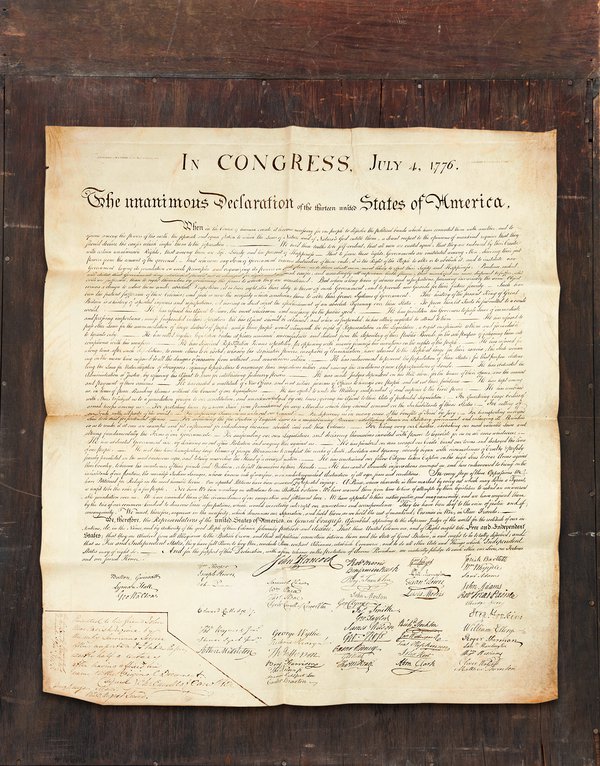A printing of the Declaration of Independence once presented to the last surviving signer of the original document will be sold next month by Freeman's Auction in Philadelphia. It is estimated to be worth $500,000 to $800,000.
The 1823 printing is one of only 201 copies produced by engraver William J. Stone, who was commissioned by then-U.S. Secretary of State John Quincy Adams. The copperplate engravings, produced on vellum, were inspired by a wave of patriotism after the War of 1812 and the growing recognition that the surviving signers of the Declaration were reaching the ends of their lives.
Stone is believed to have produced his engraving over a painstaking, three-year process that may have involved tracing by hand, using a tracing device or press copying, which is done by moistening an ink original and transferring it to parchment.
- MORE NEWS
- Philly auction house to sell rare Benjamin Franklin medallions made in 18th century
- 50-ton First Amendment tablet to find new home at Philly's National Constitution Center
- Historic Philly newspaper with iconic 'Unite or Die' masthead up for auction
The Stone engraving is known for showing both the text of the Declaration of Independence and its signatures in facsimile. It is also regarded for its size, which at 24 x 30 inches is close to the size of the parchment original. A line at the top of the engraving distinguished it from versions produced by entrepreneurs at the time, certifying that Adams was the one who commissioned it: "Engraved by W.I. STONE for the Dept. of State by order/ of J.Q. ADAMS Secy of State July 4th 1823."
Stone sold his copperplate engraving to the U.S. Department of State in June 1823, and the following year a Congressional resolution determined that 200 engravings would be distributed to official repositories, significant officeholders and the surviving signers of the Declaration of Independence. Stone is thought to have produced a copy for himself as well.
The document up for auction in Philadelphia was presented to Charles Carroll of Carrollton, Maryland, the last surviving signer of the original document. It is the last of six signers' copies of the Stone engraving known to be privately held.
Carroll, a U.S. Senator and the only Catholic signer of the Declaration of Independence, received two copies of the Stone engraving in 1824. One of them is held by the Maryland Center of History and Culture, but the other had been passed to Carroll's granddaughter, Emily Caton, and her husband John McTavish, who had his name inscribed on the document. The copy was passed down to descendants in a Scottish family and had been unaccounted for 177 years until it was found in an ancestral home in Scotland.
"I marvel that this amazing document probably left America in the mid-19th century on a sailing ship bound for the British Isles, then likely continued by horse-drawn coach or rail — or both — to Scotland, and the whole journey took six weeks," said Darren Winston, head of Freeman's books and manuscripts department. "177-odd years later, it was discovered and shipped back across the Atlantic, this time by automobile and airplane, and it took two days. That's not just a long time between trips; that's practically the entire history of transportation."
Freeman's, located blocks from Independence Hall, will display the document at an auction preview from June 17 to June 30 by appointment only. It will be auctioned July 1 at noon and later will be exhibited by Freeman's alongside other Americana highlights in the fall.

